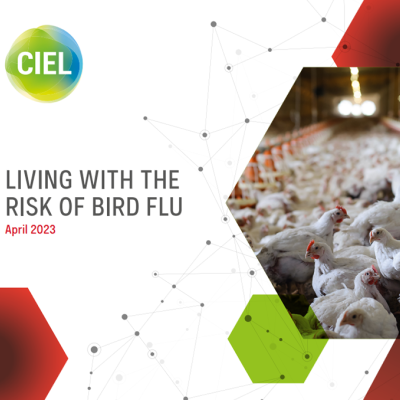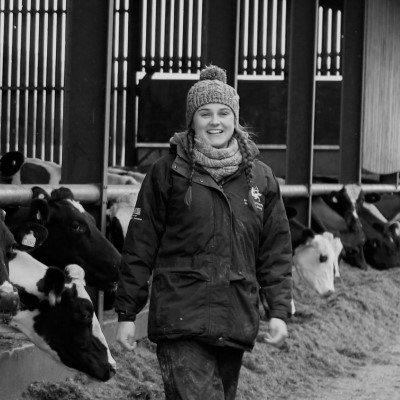CIEL | Blog: Living with the Risk of Bird Flu – Where are we now?
Dr Fiona Short

It’s been over six months since CIEL launched the ‘Living with the Risk of Bird Flu’ Report and the information contained within it is still as relevant to the industry as it was when it was first released.
Fortunately, we had a relatively quiet summer in terms of outbreaks with a few sporadic cases. However, with the onset of winter, chances are cases will start to increase causing despair for those involved and we will be living with the constant risk of bird flu once more.
One of the areas highlighted in the report was the importance of collaboration and communication. A significant amount of time and funding has been spent recently on various aspects of bird flu support and research. Associated industry bodies such as NFU, BPC and BFREPA are working closely with their members and the wider supply chain to provide guidance on lessening the impact of the virus and be a collective spokesperson.
Many are involved in the Avian influenza vaccination taskforce looking at how vaccination will work in practice and in terms of cost, effectiveness, and viability. France have started to use vaccination for some of their avian species, namely ducks. How this will work is still to be seen, with the effects on trade beginning to appear as some restrictions to French and EU exports are now in place.
Vaccination should not become a risk for UK trade so further discussions are needed to try to overcome the barriers. Currently, the UK remains focused on good biosecurity and management, rapid warning, culling and disinfection as discussions on trade effects continue.
Results from studies are now emerging, providing us with more information on how bird flu spreads. Recent data suggests that airborne transmission of the virus is restricted to less than ten metres, so farm-to-farm spread via the air is unlikely. This emphasises that biosecurity and the separation of flocks from wild birds and mammals is an optimum tool in the fight against the spread of the disease between commercial farms and backyard poultry flocks.
Further work suggests that some wild birds can develop a natural immunity, which provides them with some protection for a short amount of time against the current strain. However immunity will wane over time and be ineffective when the virus mutates. The final prospect is the development of gene-edited chicks which are partially resistant to bird flu, with the hope that in a few years further research will produce a resistant bird.
Bird flu is here to stay, and we must learn to live with it. Still, with industry and academia collaborating in research and development into the virus, birds, and vaccine, the effects of bird flu will not be as severe in the future.
In the meantime, the industry will continue to work together to lessen the effects of the disease and enable discussions on the research and development opportunities outlined.
If you haven’t already, you can download CIEL’s ‘Living with the Risk of Bird Flu’ report here and learn about the strategies that can be employed to do so.


Dr Fiona Short, Innovation Manager – Nutrition
Working within the innovation team, Fiona provides scientific insight and translation of technical research to support industry members and help ensure its impact is realised across the supply chain. Fiona has spent the majority of her career working in the animal health and nutrition industry, specialising in monogastrics, with over 17 years in research and a further six in industry.







